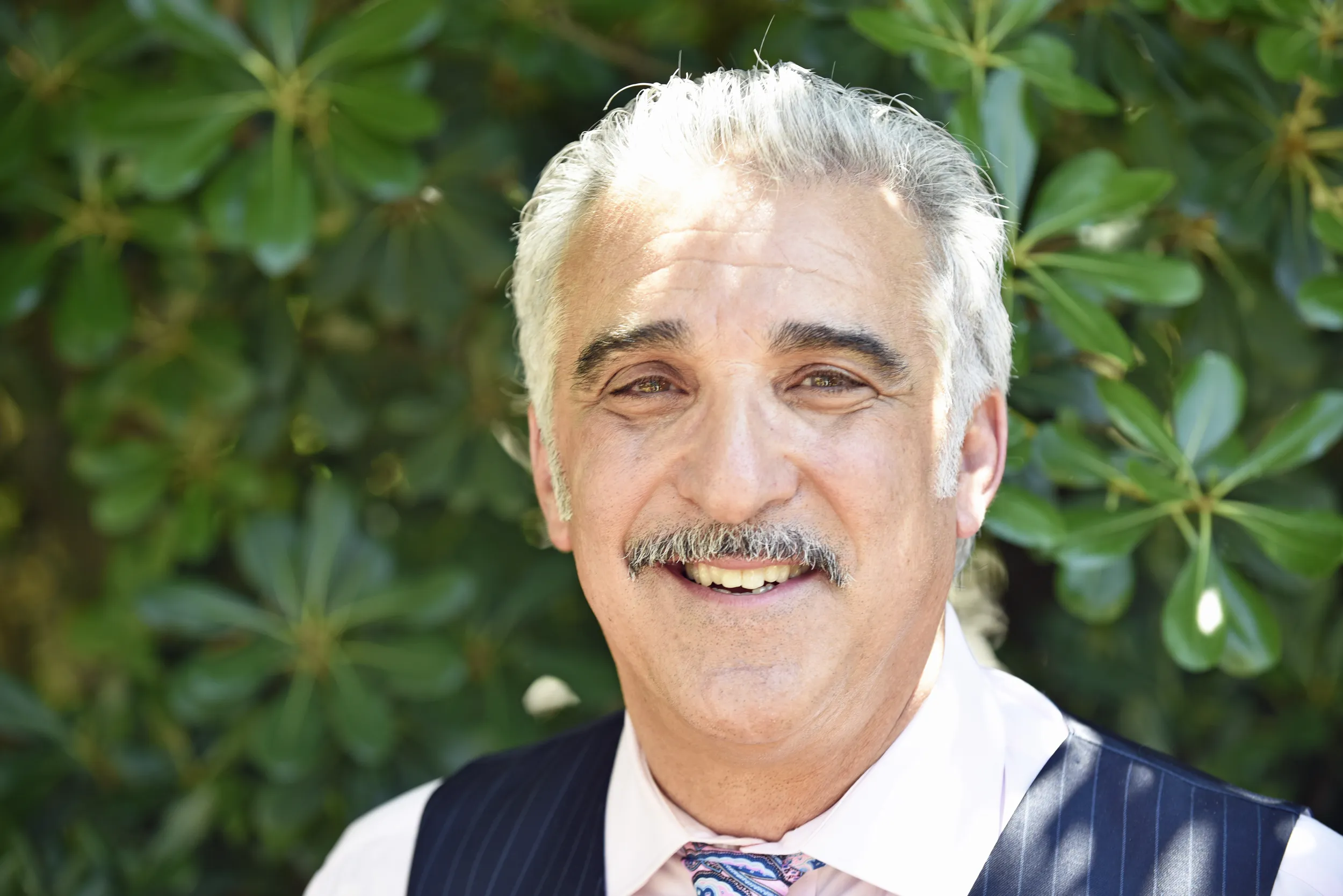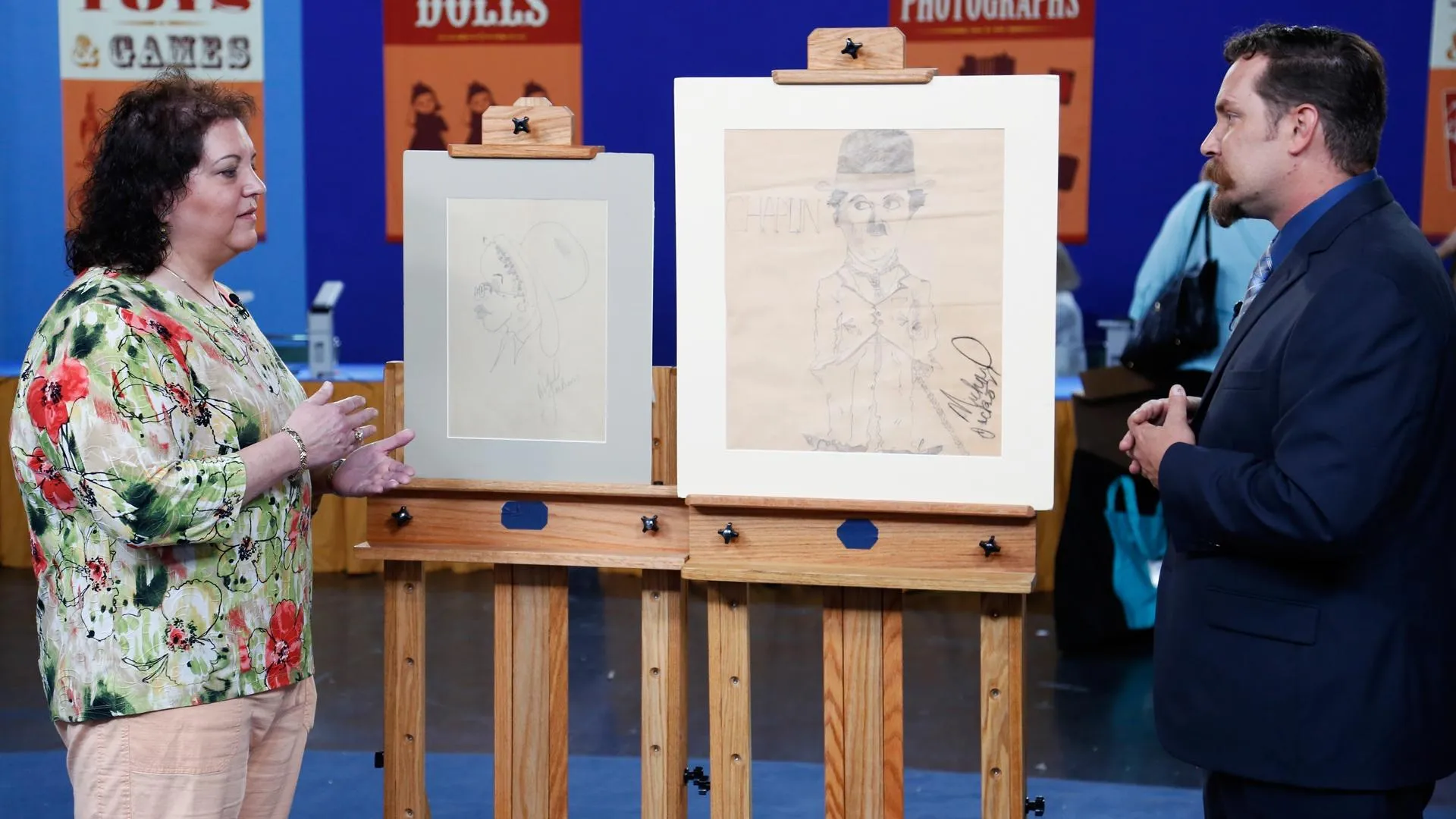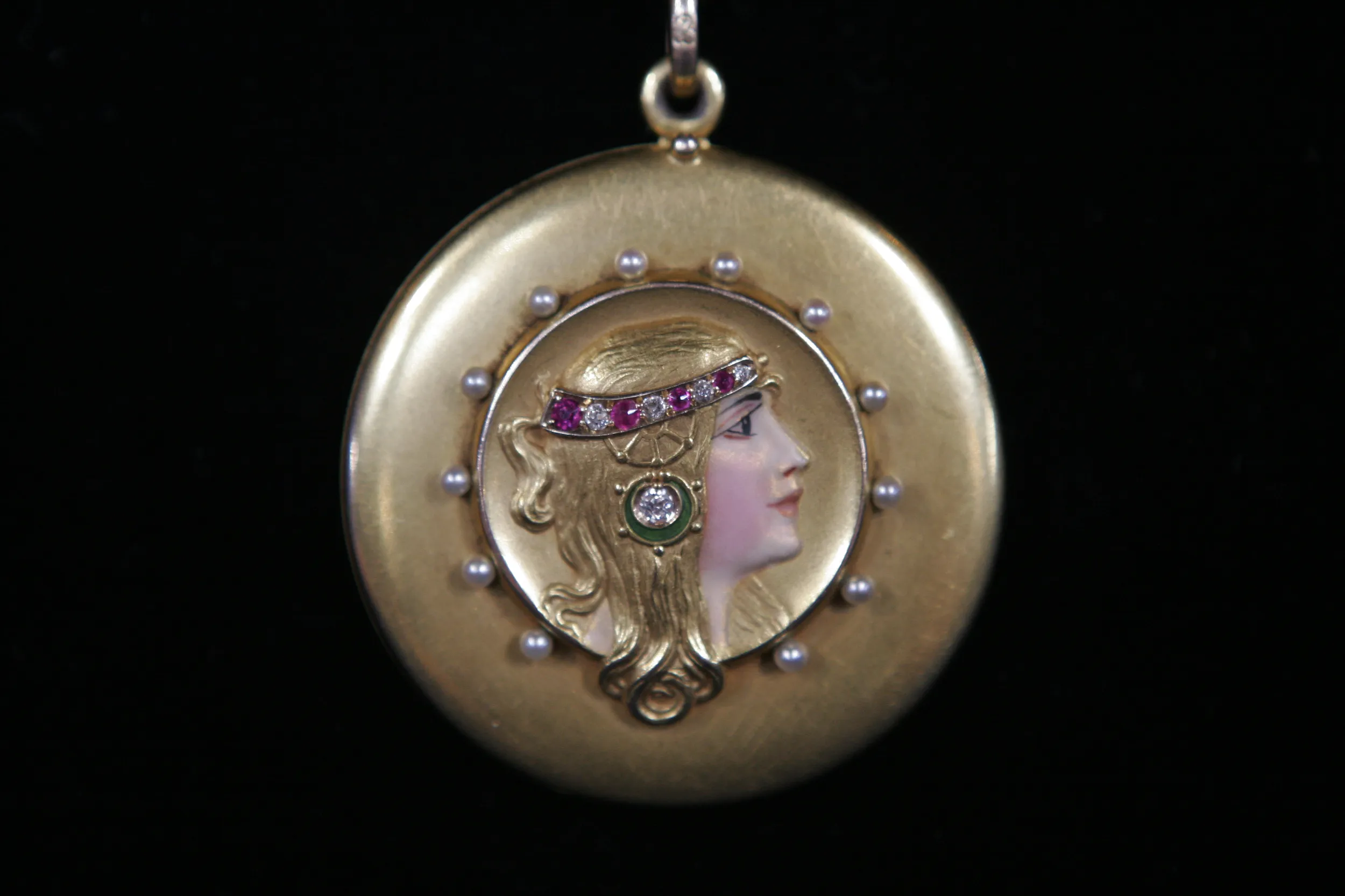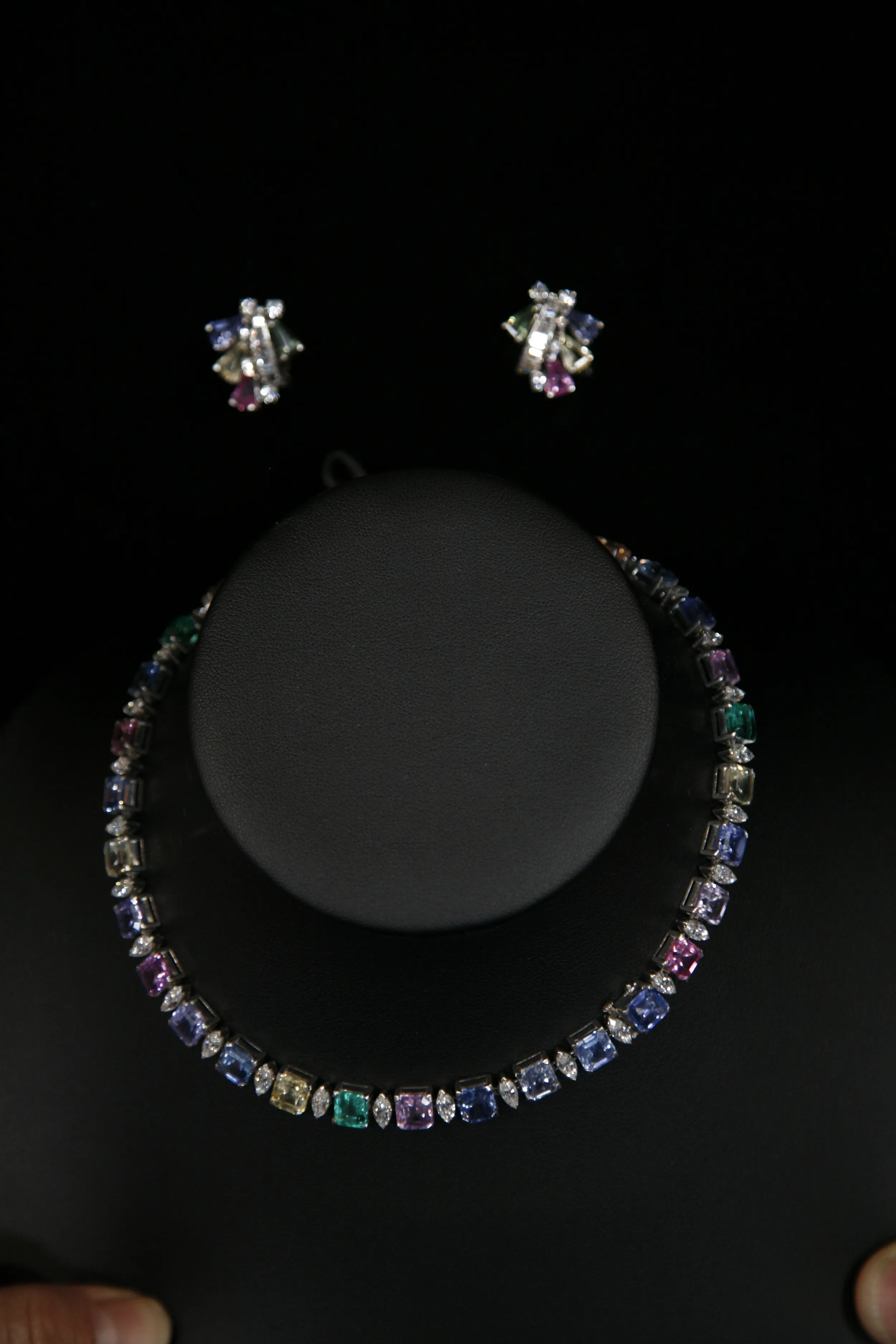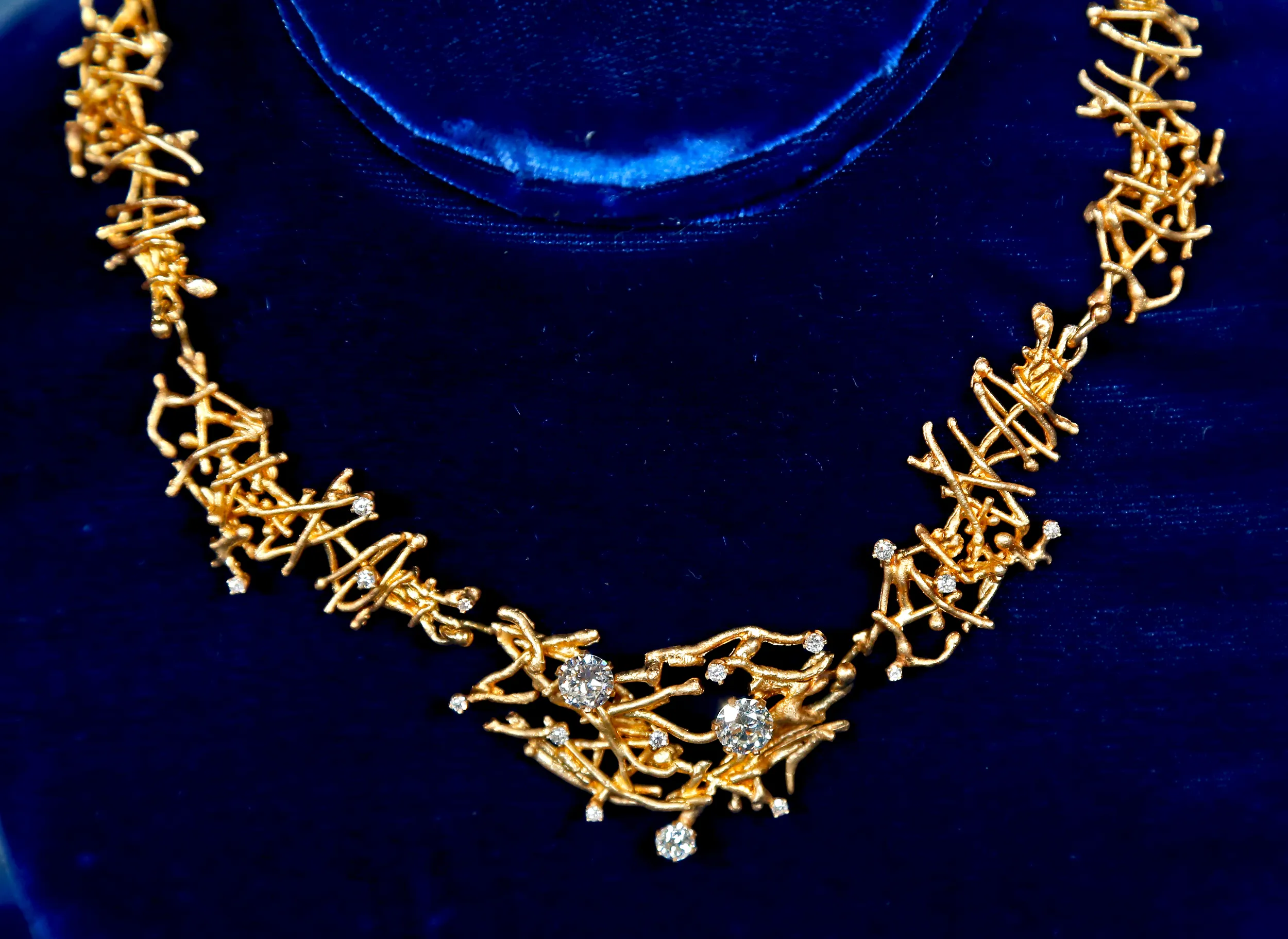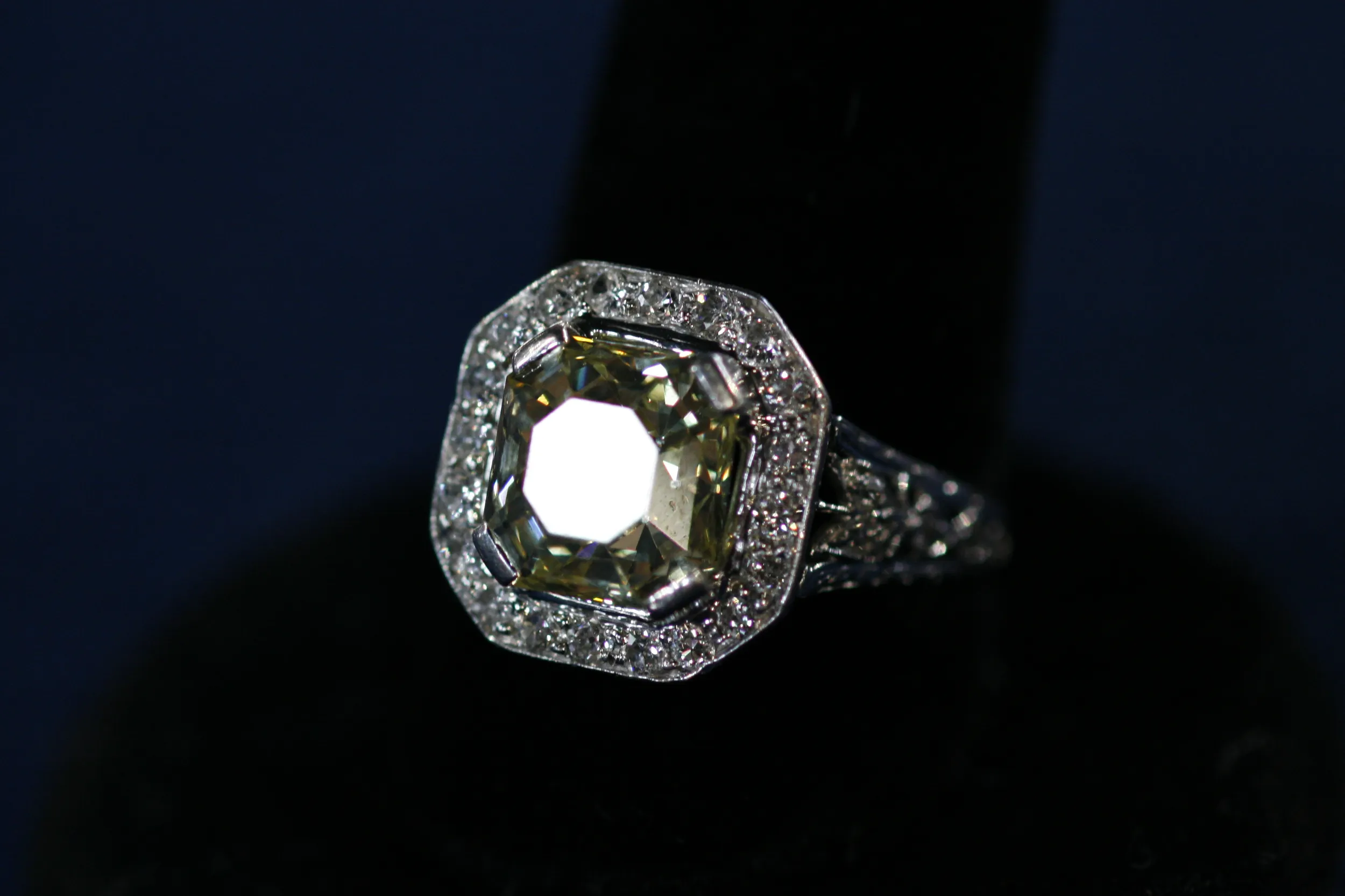GUEST: These are pieces from my late mother. I know that they were designed by Ed Wiener. My mother had it commissioned because the diamonds are from a ring that belonged to my grandmother, and she must have had it made either in the late '50s or early '60s. And the bracelet is also Ed Wiener, and that's all I can tell you.
APPRAISER: He was part of this American modernist studio jewelry. He started working around 1946. He ran around with a bunch of guys that my grandfather actually worked with one of them: Sam Kramer.
GUEST: Really?
APPRAISER: All these guys-- Sam Kramer, Art Smith, Paul Lobel-- they all met down in Greenwich Village in New York. You came in and interestingly enough, you have the cuff bracelet. It's a great cuff bracelet, it's sterling silver, it's very typical of his type of work, although this particular bracelet is a little bit of a rarer design than the usual bracelet. If you look on the back, it's clearly signed. For the most part, what you're saying is true: your mother had this piece commissioned. He eschewed diamonds. It wasn't about the material. The fact that this is in 14-karat yellow gold tells us that he did this later on.
GUEST: Okay.
APPRAISER: Really because he was almost being forced to by his clients when he moved up to 53rd Street. All of a sudden he's uptown, he's not down in Greenwich Village anymore.
GUEST: That makes sense, yes.
APPRAISER: The bracelet's earlier for him, so it's probably the mid-'40s through the mid-1950s. The necklace is absolutely this later period in his life, '60s and '70s. He's getting into this medieval influence, this real abstract expressionist. I'm looking at it before, and you saw me looking at it.
GUEST: Yes.
APPRAISER: You could tell me it came in an Ed Wiener box and you can almost guarantee the provenance that it's Ed Wiener, but it's not signed. All I could do is attribute it to it, and at that point, this piece may be worth $5,000. Today, things have to be signed. We went through it and I couldn't find a signature, but then it was bothering me, it was driving me crazy, so I looked at it again.
GUEST: Yes?
APPRAISER: See, on the bracelets, he signs it rather large, but on something like this, especially when he worked in gold, he signed it with a very simple "E.W." So I was very excited to find that. Then we look at the diamonds. Certainly the diamonds add value. The two diamonds are European cuts, so it fits with the story that they were your mom's, they were older cut diamonds from that period. They weigh about a carat each. They're nice color, they're nice clarity. Now, you had an insurance appraisal done a long time ago.
GUEST: My parents did, for insurance.
APPRAISER: And how much was it for?
GUEST: It was $10,000.
APPRAISER: A lot of money back then.
GUEST: A lot of money.
APPRAISER: The fact of the matter is if you had to get that same insurance appraisal today, it's three times that.
GUEST: What?
APPRAISER: Yeah, $30,000 today.
GUEST: No!
APPRAISER: It's a special piece. The bracelet also, the insurance replacement value is $5,000.
GUEST: (gasps)
APPRAISER: (laughs) It's pretty cool.
GUEST: Oh, my goodness!
APPRAISER: And growing up in the business and having my father talk about some of these guys, you know, it kind of hit home for me. Very American, very cool.
GUEST: I wish my parents were here to hear this! They would be so happy.
